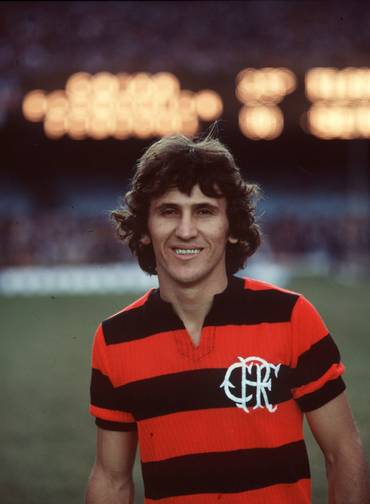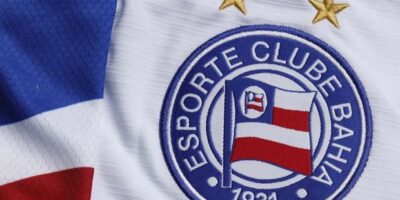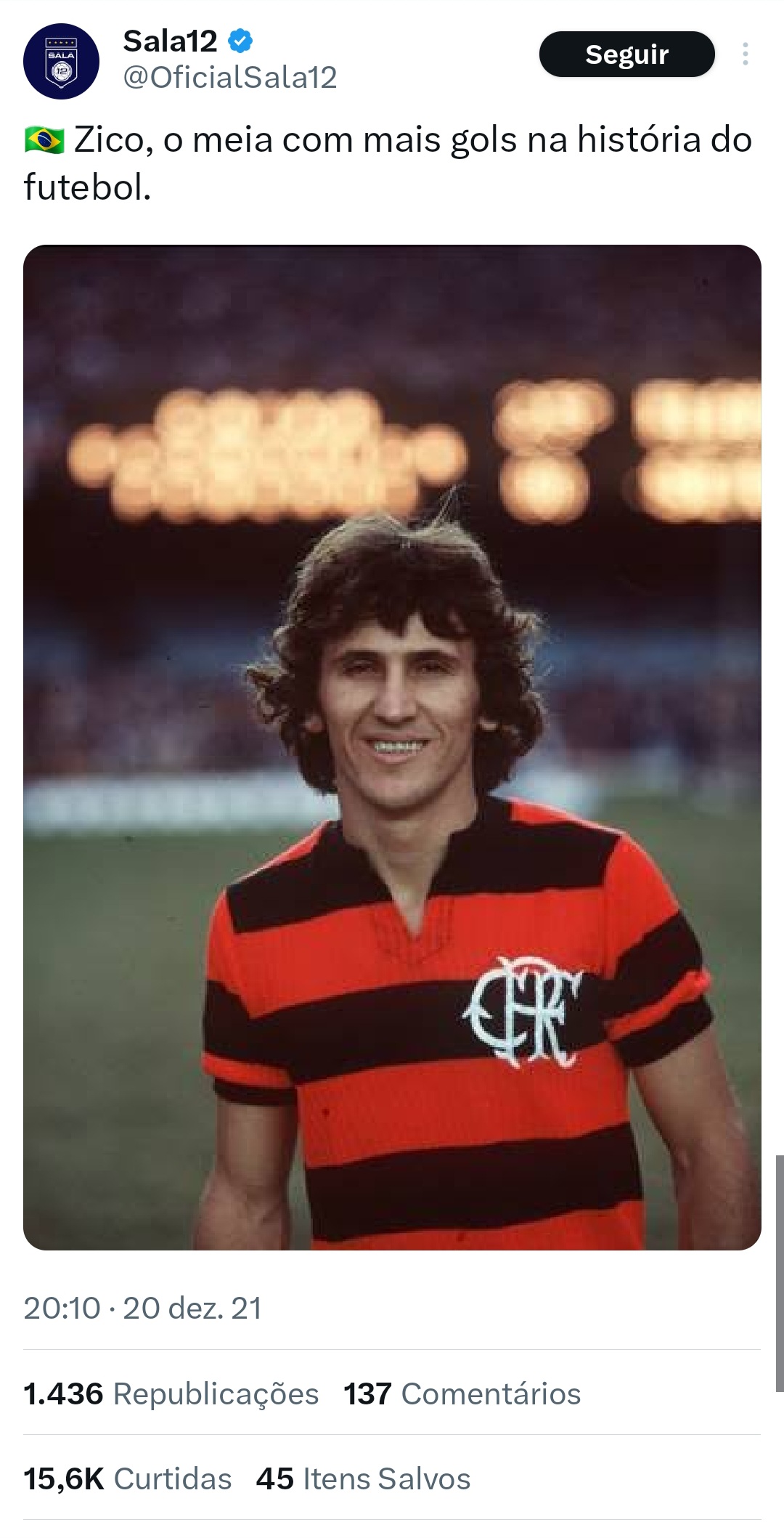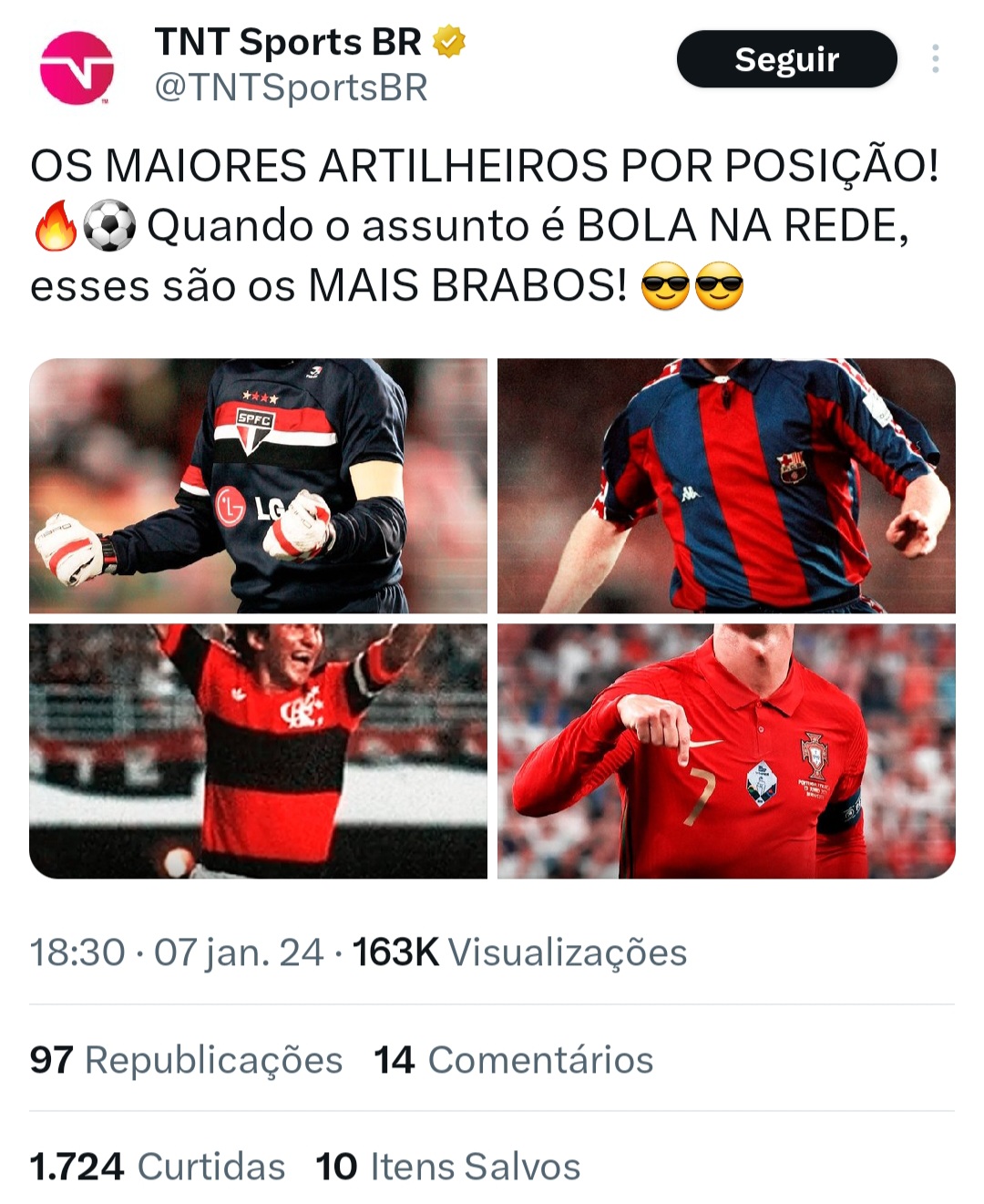It is not unusual, even in Brazil (images below), to see websites and people calling Arthur Antunes Coimbra, the great Zico, as the midfielder with the most goals in football history. In total official and non-official games, he scored 826 goals, according to his own website. There is some controversy about his total “official goals” (this European anachronic attempt to rewrite Brazilian football history) — usually people talk about a little more than 500.
Although he was football genius (for me, easily one of the top 15 players ever), the Flamengo legend cannot hold that record, because of the reasons to be explained in this post.
Initially, it is important to explain how most Brazilian teams from the late 50’s to the late 80’s used to play: the 4-2-4. From the midfield to attack, clubs had one “volante” (the defensive midfielder, number 5), one “meia-armador” (midfield playmaker, like a center midfielder, number 8), one “ponta de lança” (an attacking midfielder who used to play more advanced than similar players on that role today, the number 10), one “ponta-direita” (right winger, number 7), one “centroavante” (center forward, number 9) and one “ponta-esquerda” (left winger, number 11). Also, relevant to inform that in Portugal, ponta de lança, unlike in Brazil, means Center Forward (the “centroavante” in Brazil).
In the above Picture, one can in Placar’s Magazine Bola de Prata award, Zico listed not as a “meia-armador”, but as a “ponta de lança”, position he played during his prime at Flamengo. Yes, the carioca team also used the traditional Brazilian 4-2-4, take for example the 1981 Intercontinental Club Cub winning team: “volante” (Andrade), “meia-armador” (Adílio), “ponta de lança” (Zico), “ponta direita” (Tita), “centroavante” (Nunes) e “ponta-esquerda” (Lico). You can see below that the 4-2-4 looked similar to today’s 4-2-3-1.
The master Tostão, another great “Ponta de Lança” (despite playing improvised as a Center Forward in the 1970 World Cup), explains how Zico used to play:
To reinforce this reasoning, take these lessons from André Rocha and Paulo Vincius Coelho (PVC), competent Brazilian Journalists.
Rocha:
(…)
PVC:
Notice how Tostão, PVC and Rocha, correctly, put Pelé and Zico at the same role: “ponta de lança”. Just as the Santos great, the Flamengo legend was his club leading scorer, made plays for others, but was not the main playmaker of his team; role of the “meia-armador”. Also, relevant to underline that Rocha clearly distinguishes Zico from the “meia-armador”, when he said that the former only “went further behind in 1989, his last year at Flamego”. To understand more details about Pelé’s role, I recommend readind my article called “Pelé was a true number 10: his position on field and the formations from the golden age of Brazilian football”. You can check several evidence, like this one: Pelé himself claiming to have been a midfielder:
Translation: “I played the midfield role. I always played as a third man; I was never an advanced striker. I would always come from the midfield, because I helped to defend; everybody can see; just watch it”
Well, the more careful reader has probably already predicted the conclusions from this post. I by midfielder, a person means the “meia-armador” (the main playmaker for the team), Zico never played in that role and thus cannot be listed as a midfielder. If by midfielder, one talks about the “ponta de lança” (the attacking midfielder who played behind the Center Forward), then Zico cannot be crowned the midfielder with the most goals in football history, because there was a certain Pelé, who scored 1.283 total goals (776 “official” ones), even more that the great Flamengo legend.










sad
very very thanks!
Enzo Vieira
Zico é o meio com mais gols na historia Sim! Maior meia da história